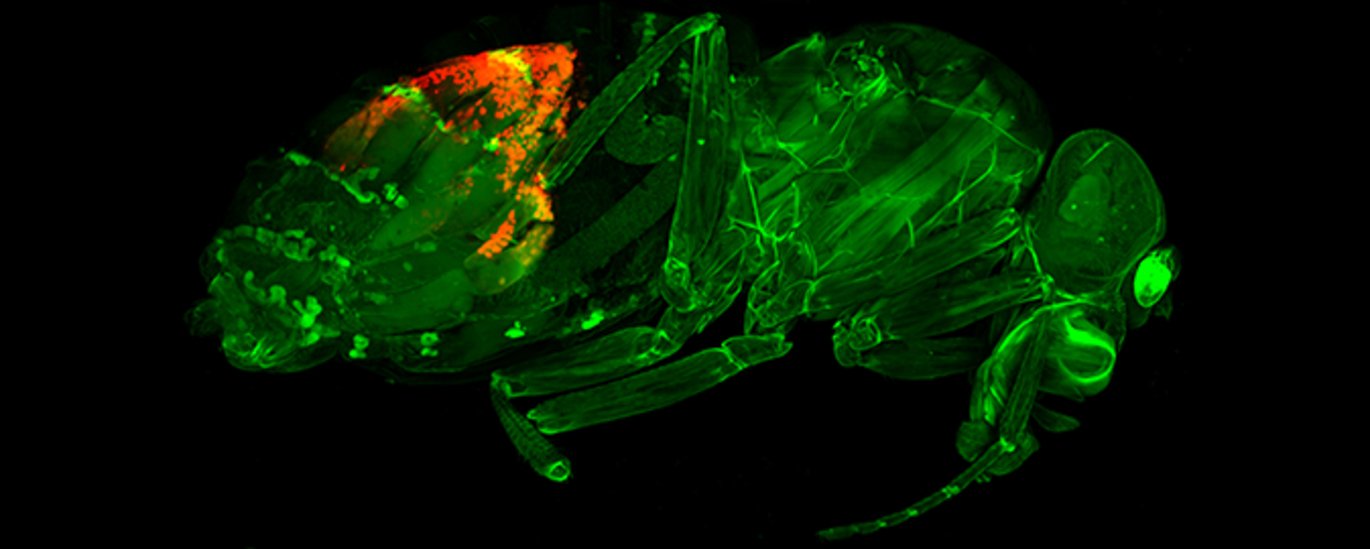Smuggling route for cells protects DNA from parasites
An international research team has now uncovered new insight into how safety mechanisms keep genetic parasites in check so that they do not damage the genome. In the long term, the results can help to understand and remedy some of the genetic problems in humans, such as low fertility.

Our cells have safety mechanisms that keep genetic parasites - such as viruses and transposons - in check while important genes of the host cell can remain active. Researchers have now shown that the molecular safety mechanisms of the host cell "smuggle" genetic information molecules around the cell, which are then used to recognize and shut down the parasites.
While information for the production of our cells' proteins constitutes less than two percent of our DNA, two-thirds of our DNA consists of selfish genetic elements such as retroviruses and tranposons and residues thereof. In fact, transposon sequences have benefited the adaptation of different species to new environments by imparting new regulatory elements to the genome. But unrestrained transposon proliferation makes the genome unstable and results in low fertility in both Drosophila, mice and humans.
Assistant Professor Peter Refsing Andersen has just started building his own group at the Department of Molecular Biology and Genetics at Aarhus University, after having worked as a postdoc in Vienna for five years. In Vienna, Peter studied the molecular mechanisms that keep transposons in check and thus ensure that intact DNA can be passed on to the next generation. Together with colleagues in Senior Scientist Julius Brennecke's group at the Vienna BioCenter, Peter has now found the answer to one of the big open questions in understanding how the defence mechanisms against transposons work.
The defence, which can shut down transposons, is guided by small RNA molecules, the so-called piRNAs. piRNAs are made in the cell from long RNA molecules that, after being produced within the cell nucleus, have to travel into the cytoplasm of specific piRNA production regions. However, the inherent problem is that the long RNA molecules - according to gene expression textbook dogmas in the field of RNA transport - should be locked inside the nucleus, as they lack all the molecular quality stamps that normally allow RNA to exit the nucleus.
Revealing new transport route for RNA
Through their work, Peter Refsing Andersen and his colleagues have found that the transport of the long RNA molecules for piRNA production takes place via an until now unknown RNA transport route. This molecular route breaks with several of the traditional dogmas of RNA transport and thereby "smuggles" RNA that cannot pass the normal quality control in the cell into the cytoplasm and even delivers the long RNA molecules directly to the piRNA production regions.
The study thus not only uncovers new insight about how animal genomes defend themselves against DNA parasites; it also reveals a glimpse of how cells sort and spatially distribute and organize genetic information. Peter and his colleagues have studied this problem in Drosophila, which is an ideal model system for this biology, which is expected to function in similar ways in humans.
Precisely this perspective, Peter Refsing Andersen finds very interesting: "Although this important biology cannot currently be investigated in humans due to technical obstacles, we can explore the biological principles in model systems such as Drosophila. The framework of understanding we build here can in the future be combined with the enormous wave of genetic information the scientific community is receiving from patients worldwide these years. Therefore, our work can help translate the billions of sequences into meaningful biological information that can benefit people in the longer term."
The article has just been published in the journal Cell:
ElMaghraby & Andersen et al., "A heterochromatin-specific RNA export pathway facilitates piRNA production". DOI:https://doi.org/10.1016/j.cell.2019.07.007.
For further information, please contact
Assistant Professor Peter Refsing Andersen
Department of Molecular Biology and Genetics, Aarhus University, Denmark
pra@mbg.au.dk
